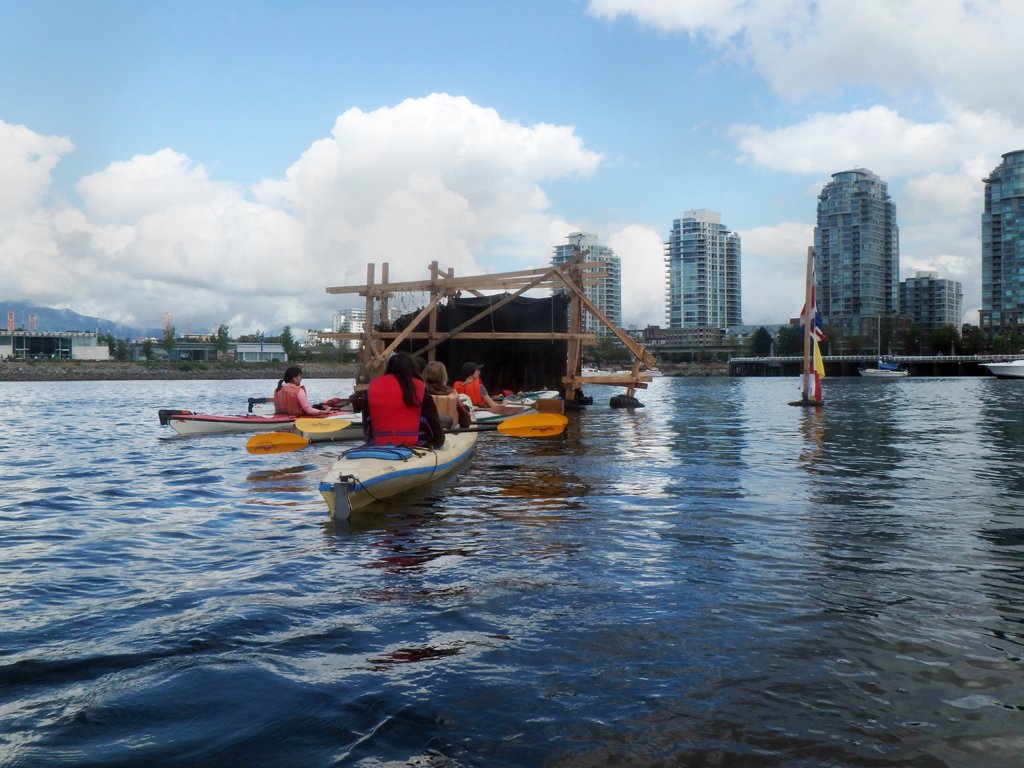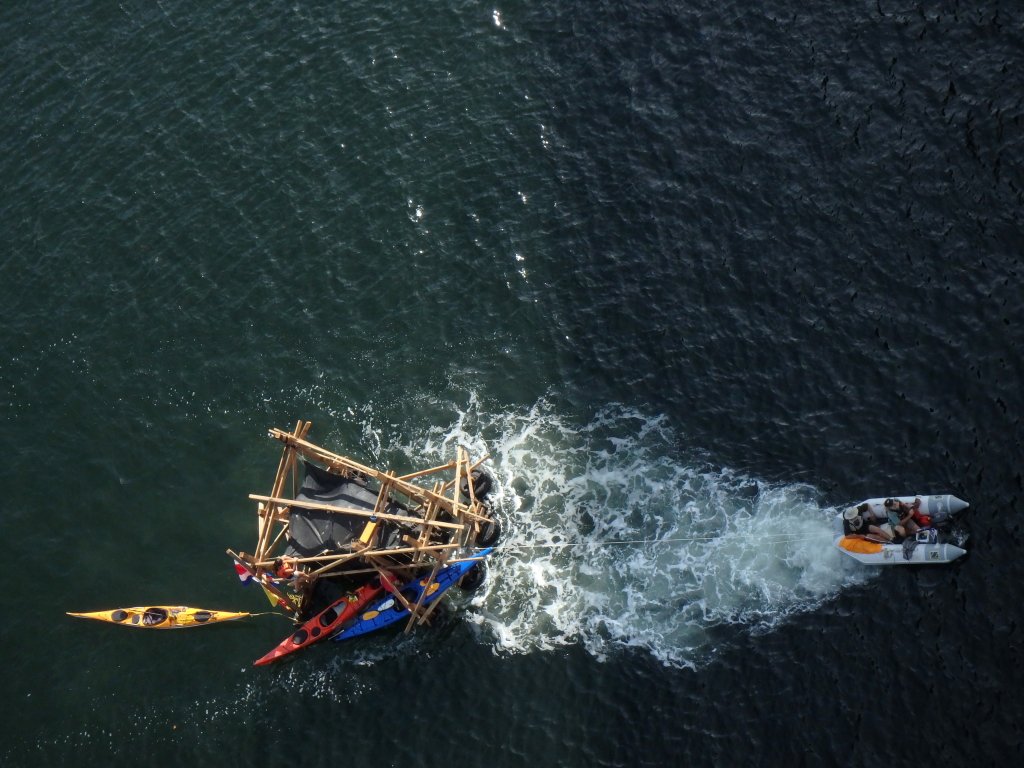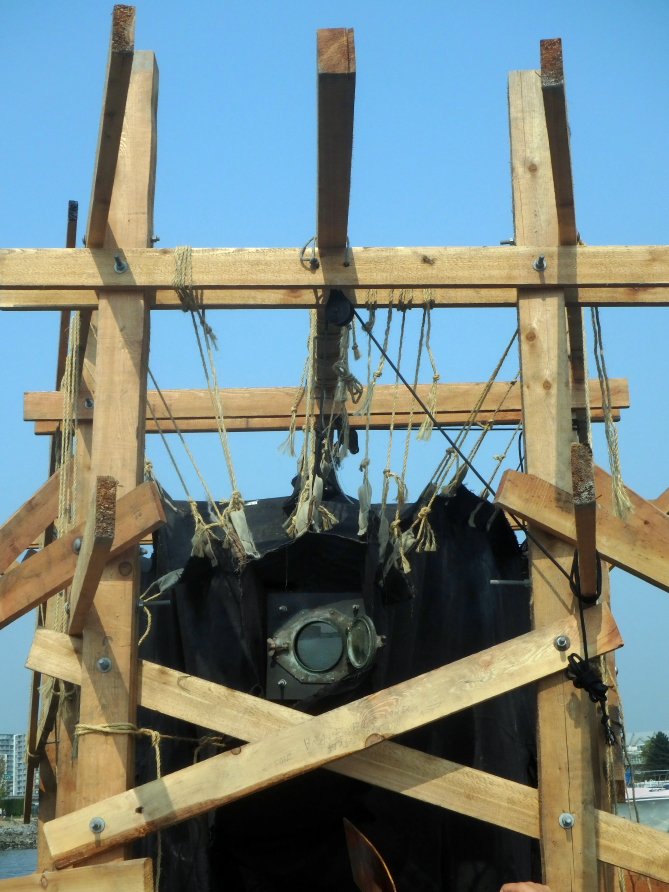Quidi Vidi + Coastal Cameras Obscura
In the shallow tidal bay surrounded by Goose Spit, in the unceded lands of the K`ómoks First Nation, participants use a kayak or other small watercraft to enter a floating, tent-like structure, passing through an array of baleen-like flaps designed to keep the light out, or to “keep the darkness in”*. Having paddled the short distance from shore, the participants find themselves inside a small optical theatre, with an image of the surrounding landscape cast inside by way of a simple lens elevated a few feet above the water at the narrow end of the darkened space. The waterborne participants are inside a floating camera obscura, the dark tent supported by a custom-designed floating structure.
Latin for “dark room,” “camera obscura” is a phrase used since about 1600 to describe an optical phenomenon and apparatus in which light is admitted inside a room or other darkened space by way of a lens or small open aperture, to project an inverted image inside, of whatever lies outside, of whatever the apparatus is looking towards. In such structures an image of the outside world was projected onto a screen or cast onto a table or some other surface. Artists such as Johannes Vermeer, Giovanni Canaletto and Joshua Reynolds are well known for having used small, portable cameras obscura – advanced imaging technology in their day – as a tool in their painting process. And, while their devices were the forerunner of later “cameras,” photography, cinema and other forms of image projection, the camera obscura has a much longer history across the realms of art and science in ancient Greece, China, the Islamic world and early modern Europe. In the latter nineteenth and early twentieth centuries, with the emergence of modern tourism, cameras obscura became popular as walk-in pavilion-like structures at seaside and other settings, of which there are a few extant examples.
Coastal Camera Obscura III takes the experience of viewing an image inside such a structure and puts it afloat on the sea. Its large, luminous projection of the surrounding landscape provides a contemplative space, with the image moving gently as the structure bobs on the water and shifting as the structure swings on its anchor or drifts with the current. In some respects, with its single, Cyclops-like lens/eye the structure presents an almost animal-like persona. Launched and sited in the waters adjacent to Goose Spit, Coastal Camera Obscura III encourages broad-ranging audiences to consider the surrounding lands and of the interplay between art and science, learning and play, while engaging in a microadventure at the same time.
Coastal Camera Obscura III builds upon two earlier projects: the Quidi Vidi Camera Obscura (a.k.a. Coastal Camera Obscura I), created for Eastern Edge Gallery’s 2014 Art Marathon Festival, in St. John’s, and; Coastal Camera Obscura (a.k.a. Coastal Camera Obscura II) in Vancouver, with Other Sights for Artists’ Projects in 2017. All three projects share the common structure of a fabric, tent-like enclosure suspended within a surrounding, floating wooden framework. Coastal Camera Obscura III, has a lighter framework, made up of hexagonal wooden poles and metal fittings, buoyed-up by custom-made floats. Reflecting a long history of working with the ebb and flow of intertidal waters the structure is assembled on the beach, on a receding tide, and will float as the tide rises around it.
* with thanks to Canadian Author Robert Kroetsch’s character Sinnot, in The Badlands, 1975.
Donald Lawrence, Coastal Camera Obscura III, 2023





























